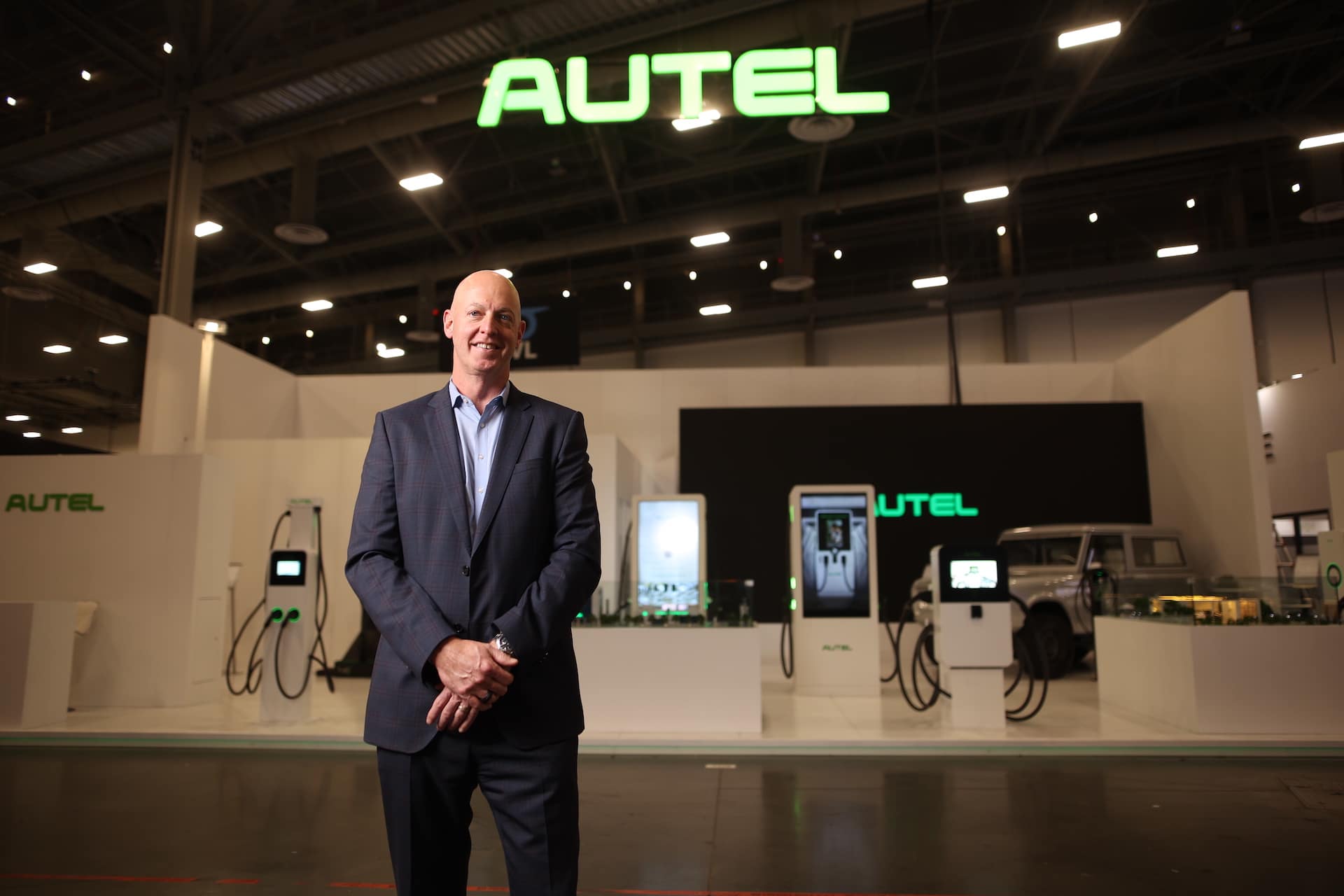John Thomas, a 30-year automotive veteran and EV driver, leads Autel Energy as COO with a passion for advancing technical solutions that elevate the industry and support clean vehicle and EV adoption. His goal is to improve the planet’s sustainability through his efforts, which include enhancing the driver experience, supporting community health initiatives, and reducing carbon emissions. Under his leadership, Autel Energy is working to power the planet by connecting vehicles and energy ecosystems through cloud, Artificial Intelligence, and big data applications. The company offers a comprehensive line of cloud-connected, high-quality EV chargers and world-class customer service.
The EV Report recently sat down with Thomas to learn more about Autel and the suite of EV chargers the company has and will bring to the market.
What can you tell us about Autel?
Autel started in the automotive diagnostic business. So for the last 18 years, we’ve basically been developing and designing high-quality diagnostic tools which are used today in about 500,000 automotive repair shops across the globe.
Autel is active in about 70 countries worldwide, but many have not heard of us because we’re a B2B company. In the past, we focus on independent shops, large automotive networks, and similar industries. The cool thing about Autel was that when we decided to get in the EV business if you look at all the other EV companies, they’re traditionally like software companies or cloud companies, or maybe a hardware company or two.
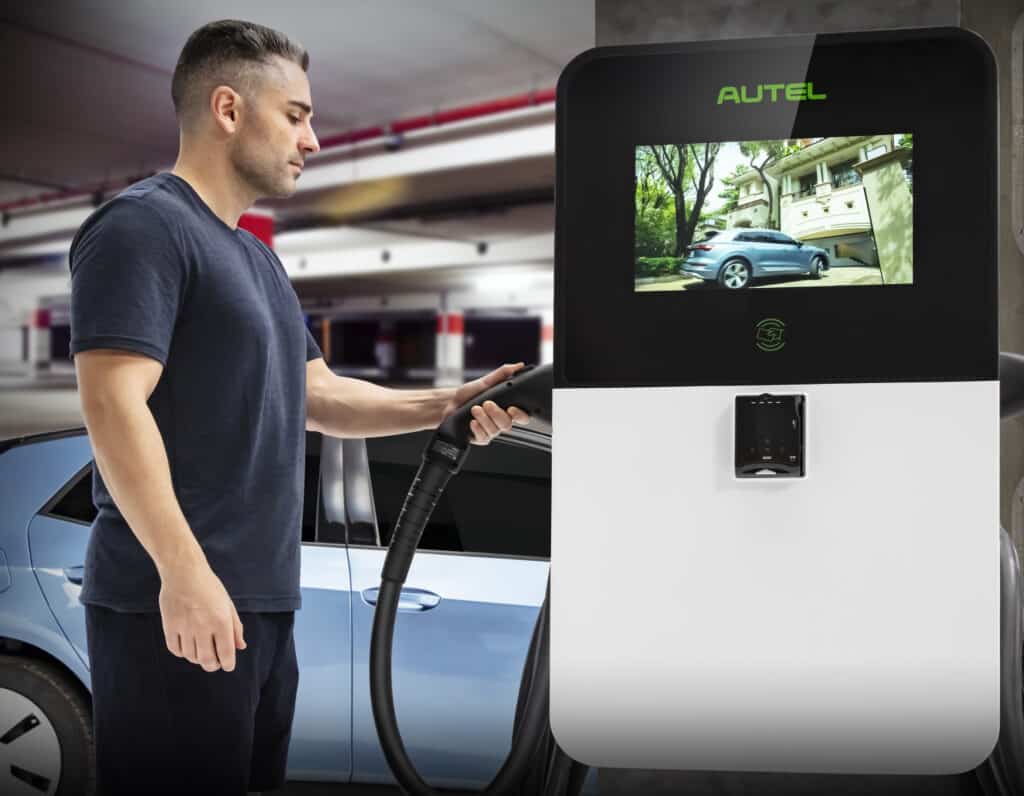
Autel is a company that was founded in automotive, and our value proposition is much wider than most of the other EV charging companies that are out there today because we understand the vehicle side. We understand the cloud side, the software, and the hardware side because we do make our own software and our own hardware.
So bringing the whole package together makes us quite unique in this space. The other great thing about Autel is 60% of our employees worldwide, of the 2,000 employees we have, are engineers. That is an unusual ratio, and you don’t see that kind of ratio in most companies.
So what does that do for Autel? It allows us to move fast and work with our customers to quickly develop solutions. We can come to market with those solutions pretty quickly. And that is, I think, a very unique element and has really afforded us some great latitude as we entered the U.S. market in September of 2022.
Autel has been in the automotive space for several years now. Does this help in growing the EV charging business?
Some of the new charging companies are struggling every day to figure things out. And we’re already in the groove. And Autel is not only in one space. Most EV charging companies focus on one segment like home charging or level two charging, or in high power charging, or somewhere in the middle. Autel is or will be in all the segments and is sort of a one-stop solution provider at the end of the day.
Providing EV charging solutions to all segments can be viewed as positive or negative. How are customers responding to this?
This hasn’t hurt our business because a lot of customers are uncertain about where they need to go. Some aren’t sure if they need medium power or high power. To be in level two, or need to be in level three, or even beyond level three.
So they’re looking for partners that can provide the correct solutions and be flexible if they need to shift to a different solution. And specifically, we have a product called the AC Floor Standing and the DC Wall Mount. And what’s unique about our AC Floor Standing is 19.2 kilowatts out of both ports. There are a lot of systems in that range, which is a really optimal range for vehicles. Usually, when they split the power, you get half and half. So we’re actually putting out the same power out of the same device out of both ports and that’s really exciting.
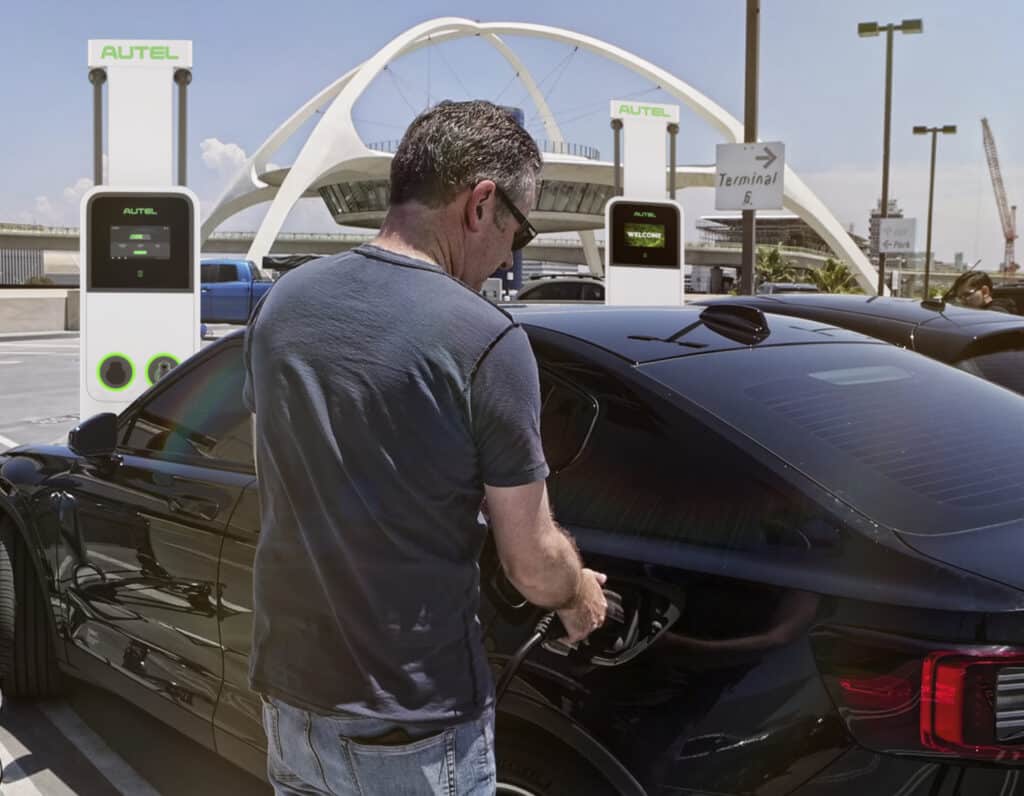
And then we take a step further: this DC Wall Mount, which is 40 kilowatts. And that again is 40 out of one port and 20 out of both. And that’s another sweet spot.
And there are not a lot of people playing in this mid-range of power. People have shifted either high or low. So when they see those products, they’re like, okay, this is something we’ve been looking for. This is something special. And this is why Autel is interesting. To take it a step further, we’re thinking about the experience not only for the end user but the owner of this equipment at the end of the day.
Autel doesn’t intend to be a charge point operator. That’s not our mission. We can sell to those individuals if they need the technology but we really want to be the enabler for the whole system, the whole ecosystem at the end of the day. Not to be just a charging supplier but to think bigger.
What about V2X (vehicle-to-everything)? Can you explain this and where it fits with Autel’s charging solutions?
With V2X, we’re talking about total energy management solutions. So how to bring power from place to place in a home, in a building, a community, and transfer that power, move it around. I think at the end of the day, that’s where this technology is going to head.
We have a challenge in the marketplace. A lot of people are scared to death of EVs because they feel we don’t have enough power. And that’s actually not totally true. So for example, in California today, we make enough renewable energy that we are actually selling it to other states.
We’re actually generating so much, but we don’t have enough energy storage, right? So now if you have this big battery bank of vehicles, whether they’re commercial vehicles or passenger vehicles, I believe at some point in time you need a charger everywhere you go, right? And maybe it’s just Level 2. But we get used to going to the grocery store and plugging in.

We go to the library, we plug in, we go to school, we plug in, and we go to the mall. By using bidirectional charging we can move energy in and out of vehicles to support the community and stabilize the grid. This way we have a massive mobile battery bank that is available on command.
As EV adoption grows, this is a super important topic in order to support grid expansion and the use of renewable energy sources.
I think the best example is a school bus fleet. Sitting three months out of the year doing nothing. We have a big battery bank that we could pull energy out of and use for other purposes.
From a design or technology focus, how is Autel different?
When you look at a lot of EV chargers today, they look a lot like science projects on the inside. They’re not purpose-built for the installer. They’re not purpose-built for the reliability, quality, and operational side afterward.
If a customer or operator has a problem, we want them to be able to quickly and easily fix the charger and get the service technician out of there so they do not need to spend money in unnecessary areas.
Our devices have been set up so they can be remotely diagnosed for a vast majority of the internal components, however, if a technician needs to work on them, it is designed to make that process very simple.
For example, our cables can come on and off the unit in less than 10 minutes. And can be replaced. That is not normal in the industry. We showed one of the OEMs this process, and their jaws dropped. They said that’s exactly what they were looking for.
Chargers are notorious for not being reliable. That is probably the main complaint you hear is either just not reliable, or they don’t work well at all. If you’re driving and you have range anxiety, finding a charger that doesn’t work is unacceptable.
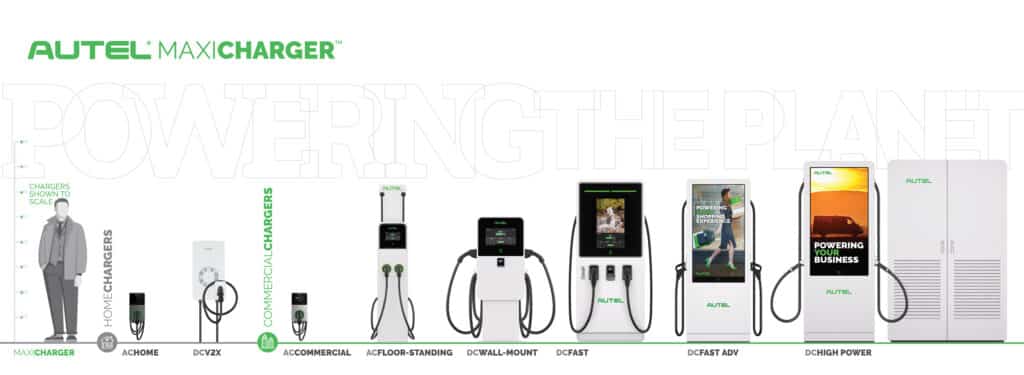
What do you think are the reasons why chargers do not work the way they are supposed to?
So we have a really big customer out here in Southern California, and they have had a poor experience from the very beginning. They’ve probably been through five or six different charging companies. They have more than 2000 units in their fleet, and when we first met with them, 50% of their chargers are down. The biggest issue was poor customer service in getting the chargers up and running again. So the responsiveness is low and not having spare parts is also an issue.
Autel is taking a different approach, which is a very big differentiator for us. We want to delight the customer, and I think it’s so simple. Everybody wants to do that, but for whatever reason, the EV charging space, it’s been about putting a piece of hardware in the ground and then getting on the next opportunity.
Autel is trying to build up the right partnerships. We’re trying to build up the right service and support channels so that when you do call, you do get help. I’ve actually tried some of our customer support with my own family to make sure they perform well without any intervention.
And I hate to say this, it sounds almost silly, but we actually listen to our customers.
I think coming from the diagnostic side is where we get our strength. Especially when you think about a diagnostic tool and where it’s used. Most are used in harsh environments where they are exposed to grease, gasoline, and other elements. No matter the operating environment, our products are built to last.
We actually build our own equipment, and we design an engineer all in-house. Autel has a production site in Shenzhen, China, outside of Beijing, and one in Vietnam.
I’m currently in the process right now of trying to put a production facility here in the US, which isn’t easy in the current environment. I thought it was going to be a lot easier than it was. It’s not. We want to build a product where we do business and help support our local economy with job creation.
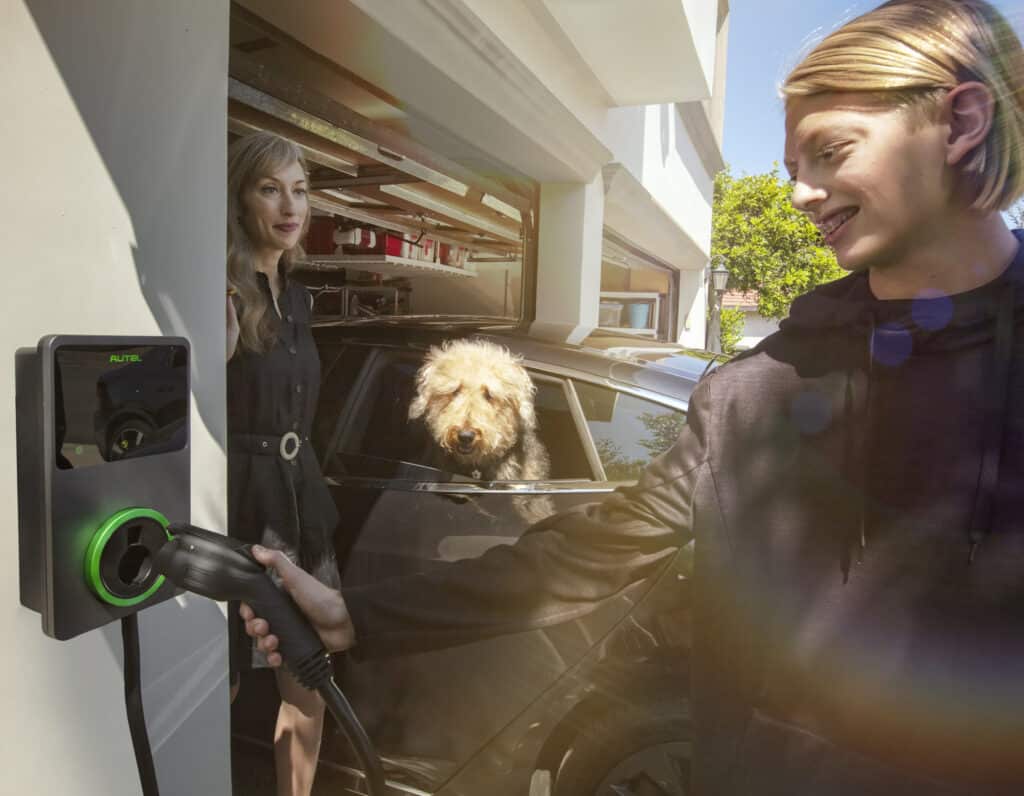
How is Autel structured to support the different EV charging markets you serve?
Like any company starting up a new division, and we’re starting it up fast, Autel hired people with specific backgrounds, and next year we will more than quadruple our team.
We’ve hired people with experience in EV charging, this has helped us understand where our competitors have weaknesses. This gives us a great value proposition with different customers. We’ve hired people with fleet experience and solar experience. Our CTO has been in the energy space, the solar space, and several other industries.
What are your thoughts on the power grid and the issues we hear being discussed?
Let’s start on a micro level. I’m experiencing that right now myself. I’m trying to start up a plant, and we’re having discussions about power coming to the facility. Talking about the switch gear inside the plant, which brings power from the transformer into the plant. I am hearing about lead times that are 58 to 84 weeks to get one of those. And much of that stems from the pandemic and natural disasters we’ve had. When everything went underwater, the industry needed to replace a lot of electrical in the Florida region.
This has caused a huge traffic jam in the system. And there is a lot of building going on in parallel too. But also at the micro level, if I start with what’s happened in our country. We offshored stuff for so long that we became a distribution society.
So if you look at most of the purpose-built buildings built today, they’re distribution buildings. They have 30 doors on one side, with very low power requirements. And that’s the standard we’re seeing in the marketplace.
And companies have also learned that they need to get production back here in the U.S. Get it closer to where they’re selling because all this disruption has affected business in a negative way. So we are going through a pivot that’s not aligned.
We have building facilities that are for distribution. They don’t have enough power to run an operational plant. And now, to get the power there, having to discuss with the utilities about bigger power. I’m trying to get the electrical products in that plant to handle that power. And this is going to be the same thing with EVs.
As we deploy EVs, one of our bigger issues is not the power availability but utilities working with the people to balance the power.
As we put more and more electric vehicles onto the grid, we’re going to be consuming more power as a community, as an industry, and we’re going to have to in parallel upgrade. I think the government recognizes that, and they’re putting funds in place to upgrade our grids, to get us more modernized.
But this was an issue long before we went to EVs. If you remember living on the East coast, we had a blackout not too many years ago when the system all went down. And that was just the front end of a fractured system that we have to invest in regardless. I think it swings into what I started at the beginning about talking about V2X solutions.
By getting energy storage in place so we can get off coal-fired plants, we can move more towards renewables and move society in the right direction. We’re probably in the wrong phase, but the push by car companies jumping in and saying we’re only going to make EVs was a game changer. This then caused all the other industries to line up. They started to shift toward figuring this out. If I went to an EV conference five years ago, I’d be honest, it was mostly environmentalists. But now when I go to an EV conference, and I see all sorts of businesses and people there. This shift in mindset will ultimately drive mass EV adoption.

